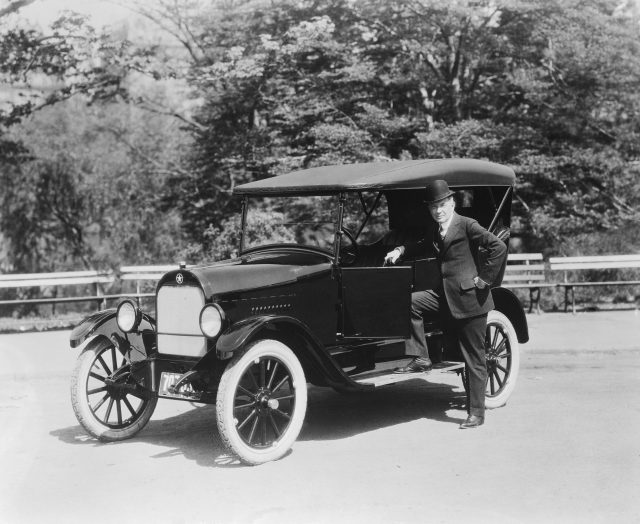More than 2,000 American automakers have come and gone in this chaotic industry.
The Lucid Air may look the same as the early electric prototype we saw in 2017, but a lot has changed. On the left, Byton’s M-Byte SUV; on the right, the K-Byte sedan. Rivian’s electric pickup, the R1T, from behind.
In 2021, there are easily two dozen electric vehicle start-ups whose founders dream of becoming the next Tesla. Wanting to be the next big thing is a story as old as the automobile business, given that more than 2,000 American automakers have come and gone, and all of those founders held the same dream. Many found some initial success only for it to all go wrong in the end.
As glamorous as the automotive industry seems, the chances of sustained success for new manufacturers remains slim. So while many failed companies have since slipped into obscurity, their stories may have some use to today’s neophyte manufacturers.
Selling reliability isn’t a panacea
Engine failure was common in the early days of motoring; both driver and passengers could routinely find themselves stranded miles from home. Most automakers responded by trying to improve the quality of their engines. But not Howard Carter.
Howard Carter’s idea was to equip his new car with two 24-horsepower, air-cooled four-cylinder engines along with the accompanying accessories. Each engine would run independently, connected through clutches in the flywheels and by chains to a single three-speed transmission. While the spare engine could be used if the other failed, it could also augment the other for traversing a steep hill, although you had to hand-crank each engine to start it. Carter worked with water-cooled four- and six-cylinder engines, along with twin radiators, ignitions, and exhaust, too.
As you might expect, these cars—dubbed the Carter Two-Engine Car—were heavier than their competitors. A lower-cost line, the single-engine Washington, proved more popular, and the Two-Engine Car ultimately led a brief life from 1908 through 1909. The public, it seems, was willing to take their chances with a single-engine car.
The moral? Save it for NASA—selling reliability doesn’t always work.
Remember to run your business, as well as a race
Front-wheel drive is now common, but it took decades to overcome its inherent problem, namely that the wheels that steer the car also provide its propulsion.
But J. Walter Christie believed that a car should be pulled like a train, not pushed like a boat. So he built an engine and mounted it transversely between the front wheels. The crankshaft displaced the front axle, directly driving the front wheels through flywheels coupled through clutches to telescoping universal joints. He established the Christie Direct Action Motor Car Company in 1905 with the intent of manufacturing his new creation. To publicize it, Christie went racing, becoming the first American to enter the French Grand Prix in 1907; he drove a 20-liter V-4-powered race car. Unfortunately, sales never materialized. “It’s no shame to be poor, but it’s damn inconvenient,” he’s reported to have said, according to automotive historian Beverly Rae Kimes.
The moral? Racing cars may be fun, but it doesn’t pay the bills. Concentrate on producing and selling consumer cars.

Bettmann / Getty Images
Even a successful Wall Street bull gets bitten by a bear market
You only get so many chances to succeed. Consider William Crapo Durant (yes, that was his middle name), who created General Motors in 1908. Ousted from GM two years after its creation, Durant regained control in 1915 through a series of financial moves, only to lose control again five years later when his stock market shenanigans put GM in financial peril.
Undaunted, he established Durant Motors in 1921, building an empire similar to that of GM and consisting of Locomobile, Flint, Durant, and Star. Initially successful, the company expanded rapidly—but sales began declining by mid-decade. Undeterred, Durant continued expanding his company through acquisition, which quickly put the company in precarious financial shape.
The 1929 stock market crash led to a severe decline in automobile sales everywhere and imperiled a number of automobile companies, including Durant’s. By 1933, Durant Motors was finished, and so was Durant’s career in the auto industry. He declared bankruptcy in 1936, and his only assets were $250 worth of his clothes, according to the February 9, 1936, edition of The New York Times, against $914,231 worth of liabilities. He died in 1947 at the age of 85.
The moral? While there may be second acts in American life, there are few thirds, fourths, or fifths.

